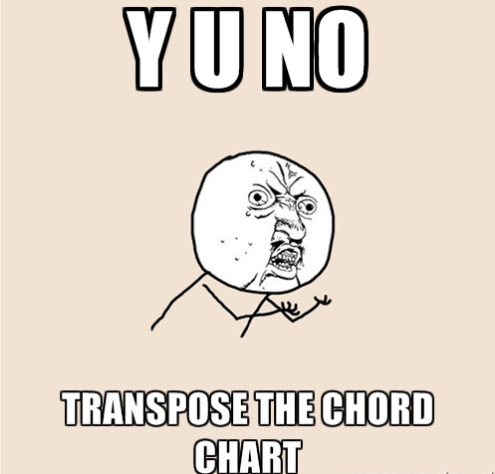5 Reasons to Switch From Chords to the Nashville Numbers System

by Eric Barfield
As worship leaders, we’re constantly transcribing, modifying and adapting chord charts for specific musicians and singers each week. It’s a lot of hard work, and often requires a small forest’s worth of paper for printing out all new charts every time there’s a modification.
What if there was a way to write a single chart that clearly spelled out the rhythm of the chords, was instantly transposable to any key, and was easy enough to teach inexperienced musicians in a few minutes? Enter the Nashville Numbers System.
For those of you like me that didn’t know how it works, the Nashville Numbers System is based on the simple concept that it’s possible to notate a 7 tone major scale using just the numbers 1-7, adding dashes for minors. Here’s why switching to the Nashville Numbers System makes your job as worship leader easier:
1. It’s fast. Really, really fast. I was working up a difficult Latin song the other day, and I was able to transcribe in realtime using just numbers things that would have taken twice as long if I was using chords.
2. It allows you to see where the chord change is accurately. Rather than posting the chords above the lyrics and relying on a musicians knowledge of how the melody goes, it simply says that each chord written lasts a measure, unless underlined when it’s only worth a half a measure. For more detailed switches, you simply make notes next to the chord (for instance, if the chord switches on the 4th beat, I’ll underline the two chords and put three dots to remind myself).
3. It makes it stupid-easy to transpose. Since the system isn’t reliant on anything other than positioning, If you know your scales and chords, you can instantly switch to any key. No more mad transcribing to drop everything a half step for a finicky singer.
4. It’s perfect for modern music. While I wouldn’t recommend using this system for jazz or classical, it works especially well with modern music styles that are mostly in major keys with few extensions.
5. It’s easy to teach. In fact, it’s so simple if you write me, I’ll send you a free and easy how-to e-book on how it works just shoot me an email here.
Eric Barfield is a full time keyboardist and producer based in Nashville, TN. Eric’s career has included his music being placed in films and commercials, working at 9,000 member Grace Church, and performing onstage with a variety of artists including Dove-award winning singer Steve Reischl, American Idol finalist Joe Banua, and jazz legend Joe Bozzi. Eric lives with his beautiful wife, Sarah, and their two Siberian Huskies in East Nashville.



2 Comments
loopcommunity · October 9, 2014 at 5:26 pm
Great post.
Naiah Fischer · February 6, 2015 at 9:03 pm
Thanks for the post. Was going to send an email about the how-to ebook but the link didn’t work. Is there a way to still get that?
Would you recommend for worship teams to write ALL their chord charts using this method?